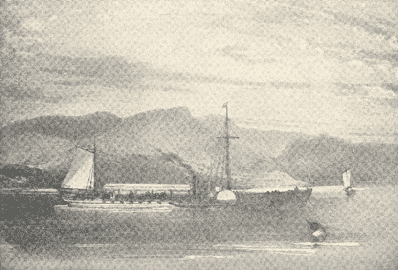Robert FultonFulton, Robert, was born in Little Britain, Lancaster County,
Pennsylvania, in 1765. At a suitable age he was apprenticed to a jeweler
in Lancaster, where he accidentally caught a taste for painting-in the
cultivation and practice of which he was subsequently quite successful.
His passion for the art induced him to relinquish his trade and make a
voyage to London, where he was cordially received by Benjamin West, then
President of the Royal Academy, and with whom he maintained a constant
friendship till death separated them. In painting, Fulton's success did
not equal his expectations; and he therefore gradually withdrew his
attention from it, and devoted it to the Mechanic Arts. As early as 1793
we find that he had conceived the project of propelling vessels by the
power of steam; as he addressed a series of letters at that time to Earl
Stanhope, on that subject, and on the more general one of Internal
Improvement; these letters were favorably received and duly acknowledged
by Stanhope.
The following account of this first steamboat was published at the time, and was undoubtedly a reality, although it was tinged with the marvelous. "Passing up the river she excited the astonishment of the inhabitants on the shore, many of whom had not heard of an engine, much less of a steamboat. She was described by some who indistinctly saw her pass in the night, as a monster moving on the waters, defying the tide, and breathing flames and smoke. Her volumes of fire and smoke by night attracted the attention of the crews of other vessels. Notwithstanding the wind and tide were adverse to its progress, they saw with astonishment that it was rapidly approaching them; and when it came so near that the noise, of the machinery and paddles was heard, the crews in some instances sunk beneath their decks from the terrific sight, and left their vessels to go on shore, while others prostrated themselves and besought Providence to protect them from the approaches of the horrible monster, which was marching on the tide, and lighting its path by the fire it vomited."
Steamboat Clermont Fulton died on the 24th of February 1815, in the 50th year of his age, and in the midst of his usefulness-but almost in penury. Sixty years only have elapsed since he made his first voyage on the Hudson in the steamboat Clermont, and the same trip is now made in less than one-third of the time in which he made it: and instead of a solitary boat on that river, hundreds of them, like floating palaces, are daily traversing our rivers, lakes, coasts and seas of the eastern world-almost annihilating time and space by the celerity of their movements. The memory of such a man should be cherished by his countrymen-it is the only patrimony which he bequeathed his children. Source: An authentic history of Lancaster County, in the state of Pennsylvania; Lancaster, Pa.: J.E. Barr, 1869, 813 pgs.
|
Copyright, 2005-2010 by Webified Development all rights reserved. | |||||||

